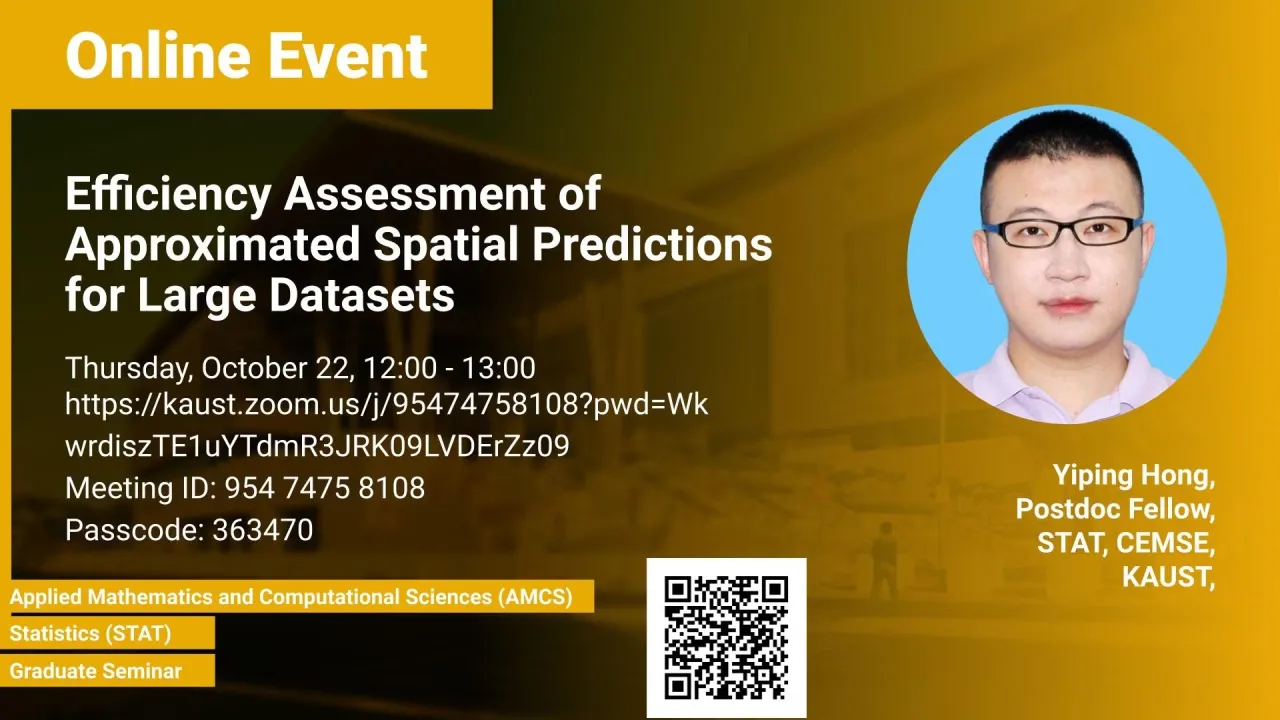
Efficiency Assessment of Approximated Spatial Predictions for Large Datasets
Our suggested criteria are more useful for the determination of tuning parameters for sophisticated approximation methods of spatial model fitting. To illustrate this, we investigate the trade-off between the execution time, estimation accuracy, and prediction efficiency for the TLR method with intensive simulation studies and suggest proper settings of the TLR tuning parameters.
Overview
Abstract
Due to the well-known computational showstopper of the exact Maximum Likelihood Estimation (MLE) for large geospatial observations, a variety of approximation methods have been proposed in the literature, which usually require tuning certain inputs. For example, the Tile Low-Rank approximation (TLR) method, a recently developed efficient technique using parallel hardware architectures, involves many tuning parameters including the numerical accuracy, which needs to be selected according to the features of the true process. To properly choose the tuning parameters, it is crucial to adopt a meaningful criterion for the assessment of the prediction efficiency with different inputs. Unfortunately, the most commonly-used mean square prediction error (MSPE) criterion cannot directly assess the loss of efficiency when the spatial covariance model is approximated. In this paper, we present two other criteria, the Mean Loss of Efficiency (MLOE) and Mean Misspecification of the Mean Square Error (MMOM), and show numerically that, in comparison with the common MSPE criterion, the MLOE and MMOM criteria are more informative, and thus more adequate to assess the loss of the prediction efficiency by using the approximated or misspecified covariance models. Thus, our suggested criteria are more useful for the determination of tuning parameters for sophisticated approximation methods of spatial model fitting. To illustrate this, we investigate the trade-off between the execution time, estimation accuracy, and prediction efficiency for the TLR method with intensive simulation studies and suggest proper settings of the TLR tuning parameters. We then apply the TLR method to a large spatial dataset of soil moisture in the area of the Mississippi River basin, showing that with our suggested tuning parameters, the TLR method is more efficient in prediction than the Gaussian predictive process method, which is a typical low-rank based approximation.
Brief Biography
Yiping Hong is a postdoc working at King Abdullah University of Science and Technology, supervised by Prof. Ying Sun. He received a B.S. degree in Mathematics and Applied Mathematics from Tsinghua University, Beijing, China, in 2014 and a Ph. D. degree in Statistics from Tsinghua University in 2020. His research interest includes the statistical inference of spatial and spatio-temporal covariance models and the network model analysis combined with spatial data. His recent publication appears in the Journal of Multivariate Analysis.